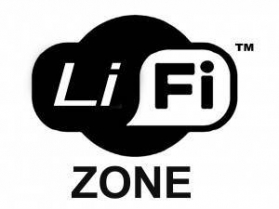Chinese Researchers Transmit 150 Mb/s Over Li-Fi
There have been some rumors recently about the upcoming technology known as light fidelity, otherwise known as Li-Fi. It appears to have reached a new milestone in the research phase -- a transfer speed of 150 Mb/s in practical applications. Earlier this year, a German research team managed to reach speeds of about 1 Gb/s, however, this was in a lab environment and probably not replicable in practical applications.
Li-Fi is a wireless technology based not on radio waves but as the name indicates, on light. Supposedly, a single 1 W LED bulb is enough for about 150 Mb/s of data, which should be able to network about four PCs. The technology also goes by the term VLC (Visible Light Communications). Of course, unsurprisingly and unlike Wi-Fi, a direct line of sight is required between the sender and receiver. From a security point of view, using light as a communications method has many benefits. That said, Mom and Dad will always be able to tell when you're on the Internet late at night.
So far, the research team has not provided any videos or other proof of the technology. However, we expect that to change November 5, 2013 when the team is hoping to reveal the technology at the China International Industry Fair.
On another note, NASA has just announced that it has managed to reach transfer speeds of 622 MB/s, using lasers, to and from the moon -- a distance of over 239,000 miles!
Get Tom's Hardware's best news and in-depth reviews, straight to your inbox.
Niels Broekhuijsen is a Contributing Writer for Tom's Hardware US. He reviews cases, water cooling and pc builds.
-
sean1357 They use FPGA chip in wifi protocol transfer with that speed. I don't know that TI DSP can handle with that speed or not?Reply -
Tonylu1595 So now your telling me that i have to replace everything in my house that uses wi-fi to li-fi? Thanks for the warning...Reply -
xiinc37 I quite like the sound of this. LiFis greatest weakness sounds to me like it's greatest strength: the whole line-of-sight thing. WiFi as it is now is horrendously overcrowded, there are 53 different access point within range of my home, all sharing the same 11 channels, if one or more of my neighbors decides to watch netflix, guess what? - no more internet for you (basically I get kicked off and/or have virtually non existant transfer speeds). This is only on 2.4ghz mind you, 5ghz is virtually empty - but for how long? With line of sight, LiFi will have some hurdles to overcome, but, within ones own home, overcrowding shouldn't ever be a problem.Reply -
Pinhedd Reply11806517 said:They use FPGA chip in wifi protocol transfer with that speed. I don't know that TI DSP can handle with that speed or not?
Anything that can be done on an FPGA can be done more efficiently as an ASIC. FPGAs are simply used to prototype logic (subject to the FPGA's own limitations) as it can be reconfigured simply by recompiling the design. This is useful for working out bugs before sending the design off for fabrication. -
sykozis The problem with LiFi is exactly that. The use of light. Since it has line of sight restrictions, it will be extremely difficult, if not impossible to use in most locations.Reply -
Parsian The material response time/scattering are the key challenges when it comes to laser transmission. I am far more impressed with NASA whopping 622 MB/s than the earthling 1 Gb/s...Reply -
RichoOssavitor So. Now we now need to utilize this with a fusion reactor as the EMI from a nuclear fusion reaction would mess with conventional hard wired or radio based data transfer. Then place this fusion reactor on the Tibetan plateau and power the Eurasian continent for the next 50 years.Reply

